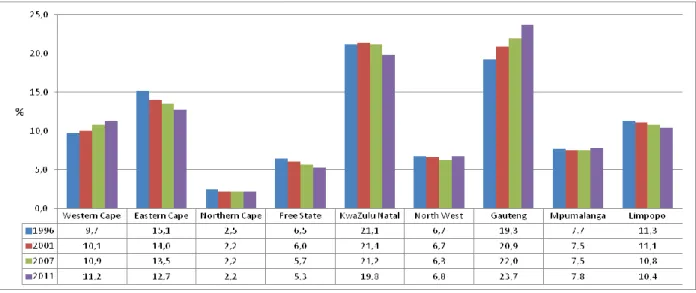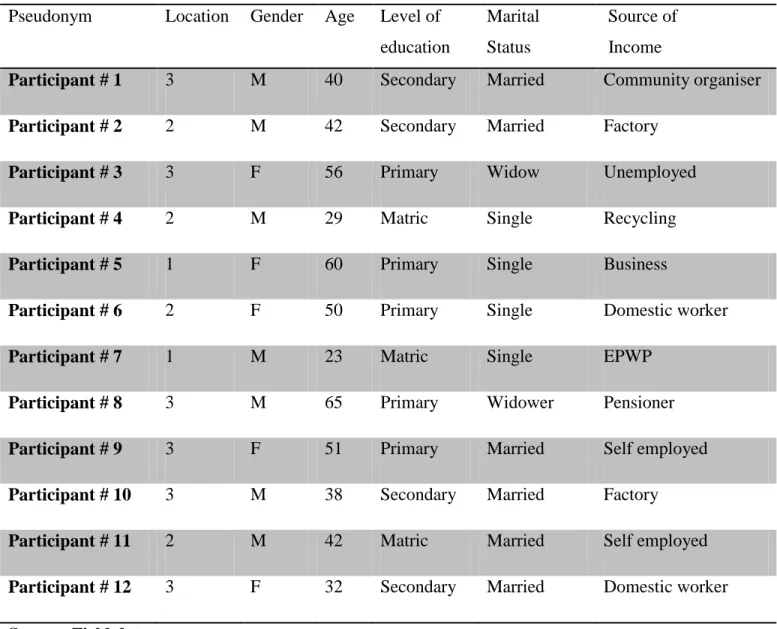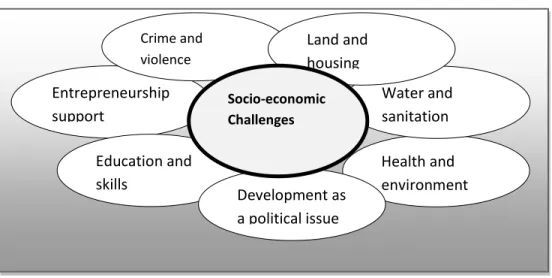Emerging data illustrates that the livelihoods of people in the Makause community were negatively affected by forced relocations. It was found that although people were exposed to crime, homelessness, poor health and lack of water and sanitation, etc., the community of Makause is physically closer to amenities and employment opportunities.
Introduction
Global Overview of Poverty
Like the rest of the world, South Africa is currently experiencing 'jobless' economic growth (Development Indicators Report, 2013). It has been reported that approximately 40 percent of the sub-Saharan African population lacks access to basic services such as clean water, proper sanitation and electricity.
Poverty in South Africa
It has been noted that “the trend of violent protests remains a major concern, with 88% of protests turning violent in July. Informal settlements are an integral part of major urban areas in South Africa due to rapid urbanization.
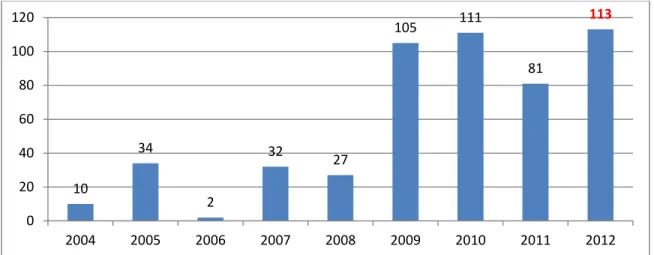
Context of the Study
It is noted that, "the poorer a household, the greater the role of transport expenditure in the cycle of poverty" (Huchzermeyer. Many people in Ekurhuleni still live in overcrowded informal settlements (119 informal settlements) without adequate access to social infrastructure and limited access to emergency services (Ekurhuleni Full Term Report, 2011).
Problem Statement
Objectives and Rationale for the Study
Research Questions
Conceptual Framework
Outline of the Dissertation
This chapter surveys the relevant literature by presenting contemporary discourses related to the definitions and nature of poverty in the South African context. The following section presents the main approaches and concepts that have shaped the definition and analysis of poverty.
Conceptualisation of Poverty
For example, it is argued that “the conceptualization, definition and measurement of poverty in a society is a mirror image of that society's ideals: in conceptualizing, defining and measuring what is unacceptable in a society, we also say a lot about how we would like things to be.” Mbuli (2008:12) echoes similar views by stating that the concepts used to define poverty determine the methods used to measure poverty. However, the shift in economic policy exacerbated poverty and inequality due to “the growing problem of unemployment and the poor track record in some key areas of social and physical infrastructure” (Habib and Padayachee). This is very applicable in South Africa, where the latest Census (2011) has confirmed the growing inequality between 'rich' and 'poor'; the country's MDG reports overlook this grim reality.
The author further argues that, "information-rich cases are those from which much can be learned about issues of central importance to the purpose of the research" (p.169). Creswell defines observation as “the act of recording a phenomenon in the field through the five senses of the observer. As one participant complained, “most people in this area are unemployed, as a result they are poor.
As argued earlier, a livelihood entails “the capacities, assets and activities that are all necessary for a means of living” (Chambers and Conway, 1992:7; Neefjes, 2000:82).
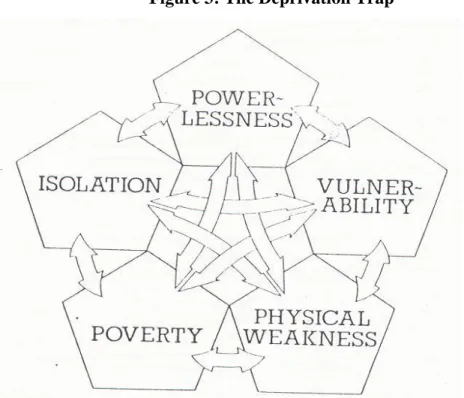
Measurement of Poverty
Poverty Eradication Policies and Strategies
According to the Department of Finance (1996:1), the vision of the GEAR strategy was to promote,. This objective is appropriate in the context of this study as it concerns the livelihood of the poor who are usually located in informal settlements. The South African government has developed a number of programs to improve the livelihoods of the poor.
Sustainable Livelihoods Approach
The World Bank's definition of empowerment is consistent with Sen's (1999) conceptualization of the capabilities approach. For example, according to May, (2012:6) the rigid demands of the formal economy have forced millions of poor South Africans to create stokvels. It is in this context that some commentators have pointed out the significant decline of the formal sector of the economy.
Conclusion
This chapter presents the research design used in the study, including the data collection methods used to gather information. It explains the processes followed to gain access to the community, discusses the sampling methods and presents the selected sample of research participants. It also highlights some of the challenges experienced during data collection and concludes with the limitations of the study.
Research design
Sampling method, sample and sample size
Patton (1990) argues that research objectives largely determine the research participants who will be selected for a purposive sample. As mentioned earlier, a local field worker familiar with the community was appointed as the research assistant; he followed the researcher around the community. A small sample size of 32 is appropriate in a qualitative study of this type as the aims are not to generalize the findings (Babbie and Mouton, 2010).
Data collection methods
After the meeting, the researcher was accompanied by the research assistant to conduct a family observation. The researcher used FGDs to confirm some of the issues picked up by the researcher during observation or one-on-one interviews. FGDs also enabled the researcher to test and verify some of the information gathered during observation and face-to-face interviews.
Data analysis methods
For example, the researcher noted that women contributed more than men during the discussion of local poverty indices, even though there were slightly fewer female participants. During the social mapping exercise, 10 participants were divided into three groups (one group of four and two groups of three participants each). The social map provided valuable information that is sometimes taken for granted by the community.
Ethical considerations
To protect the integrity of the study, all participants were asked to sign a letter of consent. A dialogue with the community regarding the authenticity of the results was carried out as suggested by Henning et al. To ensure the reliability and integrity of the data, the researcher collected the data himself.
Limitations of the study
Conclusion
As mentioned earlier, this study explores the subjective views of community members in relation to the definitions and nature of poverty in Makause, together with the strategies used to deal with the situation. Therefore, this chapter seeks to address the objectives of the study by providing a subjective account of poverty and the survival strategies of the research participants in Makause. Chapter four begins with the Makause community profile, followed by a discussion of the emerging themes related to the definitions and nature of poverty in the community.
A profile of the community and research participants
The establishment of the Makause settlement was closely linked to the advent of democracy in South Africa. One of the objectives of the study was to better understand the definitions and nature of poverty in the Makause community. Linked to the identification of poor households are local poverty indices, which focus mainly on the assets available in the community.
In this context, Chambers (1983) considers powerlessness to be one of the key elements of the disadvantage trap. Some community members cannot afford to build their own shacks and rent from their neighbors. First objective: To gain a better understanding of the definitions and nature of poverty in the Makause community.
There are also serious concerns about the impact of mining dust on community health.
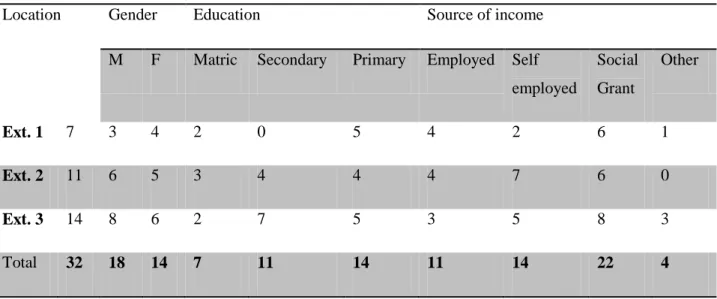
Conceptualisations and the understanding of poverty
Mapping people’s vulnerability to poverty
During the FGDs it emerged that these root causes of poverty are a direct result of the move to the Tsakane area. It was reported that the majority of those transferred to the new settlement returned to Makause after a few days to rejoin the residents who had chosen to stay behind. To show their determination to fight the proposed forced removals, the residents have taken their case to the Supreme Court.
Socio-economic challenges in the vulnerability context
- Land and housing
- Water and sanitation
- Health and environment
- Development as a political issue
- Education and skills development
- Entrepreneurship support
- Crime and violence
Despite the lack of housing development and infrastructure in the settlement, none of the participants want to be moved to an alternative site, as they fear that their livelihoods will be seriously harmed. Interference by political parties in community affairs and the "politicization" of development was identified by the majority of participants, especially during the FGD, as a common challenge. As mentioned in chapter two, the EMM promotes LED as one of the main pillars of poverty alleviation.
Local poverty indices
It was in this context that participants agreed that in the development of local poverty indices operational terms such as 'improvement of the poor' (well off) and 'behind poor' were appropriate. People considered to be the 'declining poor' will not possess such assets and as a result will experience chronic food shortages. Interestingly, in this community, wealth (the 'improving poor') is associated with a properly constructed hut using corrugated iron, with a cement floor and its own pit latrine in the yard, while poverty (the 'declining poor') is associated become with people living in huts built with mixed and poor building materials such as cardboard, plastic, old or burnt corrugated iron and other poor materials.
Strategies for livelihoods security
- Human capital
- Social and political capital
- Natural capital
- Physical capital
- Financial capital
The administration of the land remains entirely in the hands of the community through community leaders, who allocate land to newcomers. In the South African context, this includes access to social grants such as the Child Support Grant and Old Age Pension. Interestingly, all the women who took part in the study said that they had access to the child support allowance.
Conclusion
Concluding comments
The sustainable livelihoods and asset-based frameworks used in this study provided a comprehensive strategy to analyze the survival strategies of the poor in Makause. Contrary to the popular view of community development, the subjective analysis of poverty used in this study demonstrates the complexity of livelihoods for the urban poor. In this regard, the study highlighted the flaw in the top-down development approach, which involves developing the community rather than initiating development with the community.
Recommendations
An evaluation of five income generating projects in Tembisa, MA thesis, University of South Africa. Seekings, J and Nattrass, N, 2006, Class, race and inequality in South Africa, University of KwaZulu-Natal Press, South Africa. Studies in Poverty and Inequality Institute, 2007, The Measurement of Poverty in South Africa Project: Key Issues.
Focus Group Discussions Guide
Informed consent form
